Tag: Arms
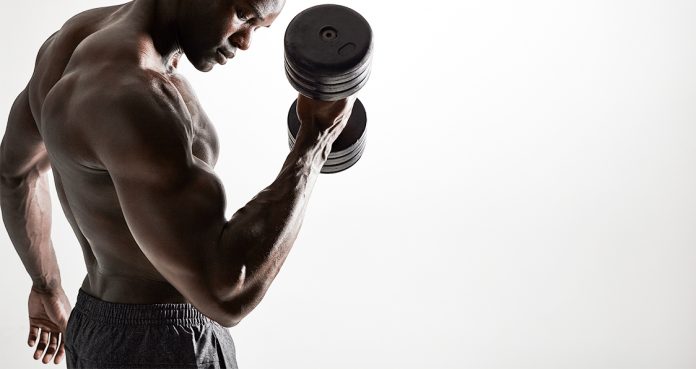
5 Arm Exercises To Make Your Guns Pop
Best Arm Exercise For Bigger Arms
If you’re a gym regular and still can’t build your arms, you might already know to grow your pythons takes more than doing a few curls. You need to train your biceps and triceps with a balanced approach to build symmetry and proportions.
Having muscle symmetry and the right proportions can add delusion and make your arms look bigger than they actually are. Follow the exercises mentioned in the article to make the most of your arm training.
21’s
If you haven’t tried 21’s, you have no idea what a brutal bicep pump feels like. You’ll have to drop your ego at the door before performing the 21’s as you’ll only be ab able to lift around 30-40% of your normal bicep curl weight.
For the first seven reps, lift the barbell from the bottom to the mid-way point. From the top to the bottom will be the next seven reps, and you’ll finish the set by performing seven barbell bicep curls with a full range of motion.
Floor EZ Bar Skullcrushers
Most people make the mistake of limiting their range of motion by overloading the bar while performing the barbell skullcrushers. In this exercise, you need to lie down with your back on an exercise mat and an EZ bar placed right next to the top of your head.
While keeping your elbows and upper arms parallel to each other and perpendicular to the floor, lift the barbell by extending at your elbows. Contract your tris at the top of the movement. Return to the starting position and touch the floor with the weight plates on the bar before repeating for another rep.
Arm Blaster Hammer Curls
The arm blaster is one of the most underutilized accessories in the gym. Using the arm blaster turns your normal dumbbell curls into an isolation exercise by eliminating the possibility of using momentum to lift the weights.
Performing the dumbbell hammer curls using an arm blaster will help in developing the length and peak of your guns. Make sure you squeeze your bis and tris with every rep while performing the exercises mentioned in the article.
Single Arm Cable Extensions
Unilateral exercises like the single-arm cable extensions are an incredibly effective way of fixing muscular imbalances. Performing the single-arm cable extensions can also help you achieve a better mind-muscle connection and hence a better pump.
Hold the cable in one hand with a neutral (palms facing the side) grip and the pulley should be at the highest position. With a slight bend in your back, push the cable towards the floor while maintaining your elbows in the same position. Hold and contract your tris at the bottom of the movement and repeat for the recommended reps.
Double Arm Overhead Cable Curls
Ask someone to show you their guns, and they’ll probably hit the front double biceps pose. Performing the double-arm overhead able curls can help you build the roundness, peak, and separation in your bis which can make your guns pop.
To perform the overhead curls, attach the pulley at a height where it is slightly above your shoulder level. Your upper arms should be in a straight line and parallel to the floor while you’re performing the exercise. Contract the life out of your pythons as you flex them at the front double biceps pose position.
What is your favorite arm exercise? Let us know in the comments below. Also, be sure to follow Generation Iron on Facebook, Twitter, and Instagram.
Header image courtesy of Envato Elements
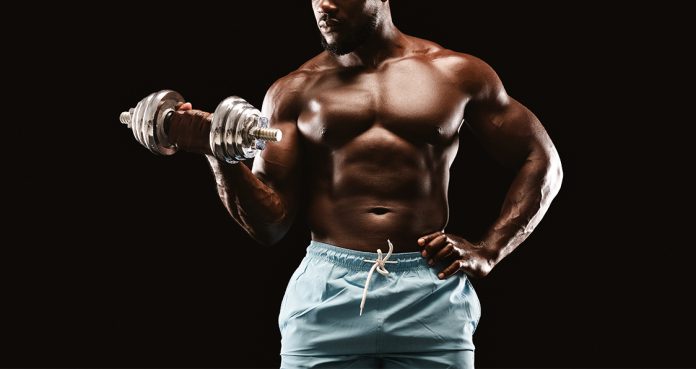
Top 5 Dumbbell Exercises You Should Be Doing
Getting back to the basics
Ah dumbbells. I don’t know about you guys but they remind me of Junior high school. Before all these crazy machines were popular – dumbbells were the way to get strong. Everybody remembers doing dumbbell curls in your friend’s basement with his dad’s weights and thinking “Oh my God I’m so strong, the girls are gonna love this.” Well it’s no secret that dumbbells are just as valuable today as they were back then, if you know how to use them that is.
Dumbbells are great because they provide you with a wide range of motion while lifting as well as being economical on space. You may not have the room to hold a barbell and plates but most of us have enough room for a couple of dumbbells. With that being said, just because you have the equipment doesn’t mean you’re using it to the best of your ability. We’re going to show you some compound exercises to help you get the most out of those barbells and shred your bodies in the process.
Curl and Press
This is a great exercise that combines two singular movements (the bicep curl and shoulder press) in a natural progression movement that will get you strong and lean.
Stand with your feet slightly wider than hip-distance apart. Hold one dumbbell in each hand next to your legs. Face your palms forward with your thumbs farthest from your body.
Exhale, bend your elbows and raise the dumbbells to your shoulders. Inhale and rotate your wrists so that your palms are facing away from your body.
Exhale and lift the dumbbells over your head.
Inhale, bend your elbows and lower the weights to your shoulders. Exhale, rotate your wrists and face your palms toward your body.
Inhale, straighten your arms and lower the weights to your sides into the starting position.
Complete one to three sets of 10 to 15 repetitions. Rest for 45 to 60 seconds in between sets.
Alteration
If you want to up the exercise try starting in a squat position with weights held by your sides ad squat up into the curl and press. Still not enough? Hold the press at the top and squat into that also. After a couple, you’ll feel it.
The Crush Grip Goblet Squat
The goblet squat is a great exercise that was popularized by legendary strength & conditioning coach Dan John. This exercise not only hits all your leg muscles but because of the grip it engages your core and chest.
Stand holding a light dumbbell by the horns close to your chest. This will be your starting position. You want to actively squeeze into the dumbbell either by the head or the body. This activates the chest muscles.
Squat down between your legs until your hamstrings are on your calves. Keep your chest and head up and your back straight.
At the bottom position, pause and use your elbows to push your knees out. Return to the starting position, and repeat for 10-20 repetitions.
Alteration
If you like this exercise you might also want to try the Dumbbell Front Squat. It’s a regular squat but you bend your elbows and put both dumbbells on the meaty part of your shoulders. Pause at the bottom and then come back to starting position. This will strengthen your core as well as giving you strength and stability.
The Dumbbell Bench Press
This exercise is preferred to the the barbell bench press for many bodybuilders. For one, it adds additional difficulty because not only do you have to lift the weight but also balance them individually. This move also allows for a deeper stretch and better symmetry as you can work each side individually.
Sitting on the end of the bench, with the dumbbells resting against your abdomen and thighs, slowly lay back onto the bench. Lift the dumbbells to a position directly over your chest.
Lower the dumbbells until they are slightly lower than your chest and then press the dumbbells to full extension.
After performing your set number of repetitions, lower the dumbbells back to your abdomen and sit back up so the dumbbells are again resting against your thighs and abdomen.
Alteration
If you want to make things interesting try making sure the sides of the dumbbells clink at the top of each extension and then rotate your wrist inward so that the sides of each barbells touch before breaking them back to your chest. This will keep your arms extended longer and the range of motion will hit different muscles.
Bulgarian split squats
This exercise will not only test your strength but your balance. This is a movement that will keep you limber and strong in the off season.
Hold a dumbbell in each hand, stand facing away from a bench, and place the top of one foot on the bench.
Try to keep all the weight on your front (standing) foot as you bend at the knee and descend into a one-legged squat.
Alteration
If you’re feeling froggy try curling the weights either as you go down or when you’re in the up position.
Dumbbell Pullover
You can look at this movement as a back exercise or an upper chest exercise but either way you should incorporate this into your dumbbell repertoire.
Place a dumbbell standing up on a flat bench.
Ensuring that the dumbbell stays securely placed at the top of the bench, lie perpendicular to the bench with only the back of your shoulders touching the bench and your legs holding up your lower body (almost in a back bridge pose) . Hips should be below the bench and legs bent with feet firmly on the floor. The head will be off the bench as well.
Grasp the dumbbell with both hands and hold it straight over your chest with a bend in your arms. Both palms should be pressing against the underside one of the sides of the dumbbell. This will be your starting position.
While keeping your arms locked in the bent arm position, lower the weight slowly in an arc behind your head until you feel a stretch on the chest.
At that point, bring the dumbbell back to the starting position using the arc through which the weight was lowered.
Go back to staring position and continue for your set amount of reps.
Alteration
To direct this exercise toward your chest, keep your elbows close, choke up towards the head of the dumbbell, and concentrate on powering the movement with your hands. To direct it toward your back and lats, let your elbows flair out more and concentrate on using your elbows to power the movement.
There you have it, the top 5 dumbbell workouts that will keep you lean and strong in the off season. Have you tried any of these before? Are we leaving any killer ones out? Let us know.
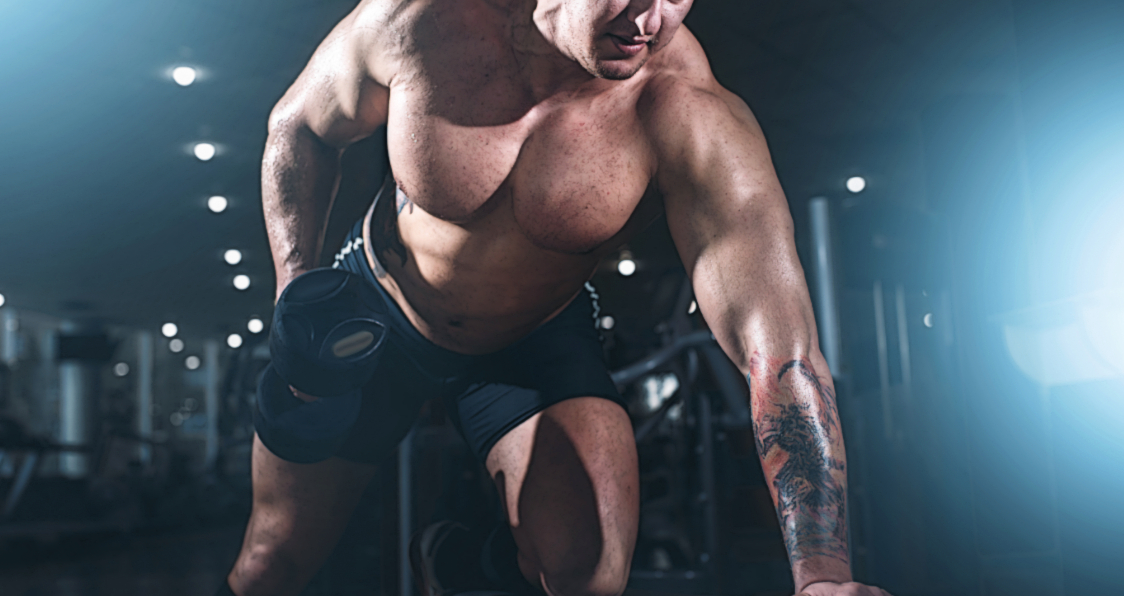
Can’t Afford The Gym? Try The Jailhouse Method
Insane gains the prison way.
In this day and age gyms are more pricey than they’ve ever been before. Many people wish to get into shape and make some serious gains, but their lack of funds keep them from being able to get into the gym and achieve their fitness goals. It can be a bit depressing knowing that you want to make a change, but can’t manage to because of economic interference.
So does that mean you might as well give up and forget about ever making some serious improvements on your body? Hell no! Though machines in the gym do help a great deal in getting your body into ripped and massive condition, that doesn’t mean you can’t make some development without them. When the tools are lacking for the task at hand, the next step is to innovate and do the next best thing. Workout without them.
This is where the concept of the prison workout can help a great deal in improving your physique. For the incarcerated, there aren’t a bunch of fancy machines or dumbbells lying around. For them to improve their strength, muscle endurance, and physique, they must rely on bodyweight exercises to make the difference. So what would a prison workout consist of? For the most part the exercises consist of pushing and pulling motions that will thrash your muscle into shape. We have a list of some prison inspired exercises that are sure to make all the difference to your routine with or without machines.
Upper Body Workout
There are a number of push up and pull up variations that are sure to work your chest, triceps, back and even your core. The key to building up a strong upper body is variety, consistency and attacking different muscle groups with the same intensity. This list of push up and pull up variations will add some variety to your routine and ensure that your muscles are attacked from multiple different angles.
Diamond Push Ups
3 sets, 20 reps
Wide Grip Push Ups
3 sets, 20 reps
Chin Ups
3 sets, 10 reps
Wide Grip Pull Ups
3 sets, 10 reps
Lower Body Workouts
The lower body workout routine is likely to look fairly similar to what you would see in the gym. The lack of weights to give added resistance is a bit of a hurdle to get around, but in exchange for the usual weighted variations, the focus should be on muscle endurance. By the time you’re ready to do a weighted squat the muscle endurance will aid you in pushing some weight.
Body Weight Squat
4 sets, 20 reps
Lunge
4 sets, 10 reps
Calf Raises
4 sets, 25 reps
But you’re still looking to build up muscle then having a training partner for these exercises can be a huge help. For instance, you can have your partner sit on your shoulders during a squat or on your back while doing a calf raise variation (donkey calf raises). They may be a bit more difficult to pull off, but if you’re in a tight situation it should do the trick for muscle growth.
Would you ever use the body weight workout in a bind? Let us know in the comments below and be sure to follow Generation Iron on Facebook and Twitter.
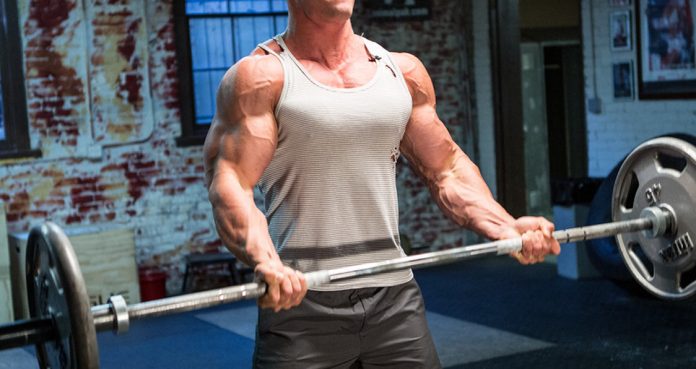
Get Bigger Arms With This Simple Workout
Sleeve-Splitting Arm Workout
The idea of having big arms push many of us to get a gym membership. Huge arms have been associated with machoism for a long time. Ask a kid to flex his muscles, and he’ll most probably hit you with a front double bicep.
You need to pay equal attention to your biceps and triceps. You can’t go crazy with your bicep workouts while overlooking your triceps development. Muscle symmetry is important for strength and aesthetic purposes.
Some people hurt their gains by training their arms every single day. Training your arms every day won’t get you bigger arms. Doing this leads to overtraining since your muscles need time to recover and grow after a workout.
Many people train their biceps before their triceps on the arms day. This can lead to weak triceps since you might be exhausted by the time you start your triceps workout.
This can happen for any muscle you train second on a multi-muscle training day. To combat this in your arm workouts, you will be doing antagonistic supersets. In this advanced training technique, you superset different muscle groups in a single set. For, e.g., – you will be super-setting your biceps with your triceps. Follow this workout to get bigger arms.
Superset 1
Standing Cable Bicep Curls – 3 Sets 15 Reps
You would be starting with a cable exercise to pre-exhaust your muscles. This will help you get the same pump later in your workout while using relatively light weights. Use a straight bar attachment for this exercise.
Overhead Rope Cable Tricep Extension – 3 Sets 15 Reps
Your triceps consist of three heads; medial, long and lateral. You need to train all three to ensure an overall development. The overhead rope cable extensions target your long head. Using cables will help you maintain tensions on your triceps throughout the movement.
Superset 2
Dumbbell Curls – 3 Sets 15 Reps
Dumbbell curls is an incredibly effective exercise to target your biceps. In this exercise, rotate your hands outwards at the top of the movement. This will help in building the peak in your pythons.
Close Grip Bench Press – 3 Sets 15 Reps
Doing a compound exercise (multiple joints) can help build size and strength in your target muscle group. Close grip bench press helps with the overall development of your triceps. Make sure you have a complete range of motion while performing this exercise.
Superset 3
Concentration Curls – 3 Sets 15 Reps
It is always more effective to end your bicep workouts with an isolation exercise. Concentration curls were one of Arnold’s favorite exercise. This exercise helped him turn his biceps into mountain peaks. You need to maintain a mind-muscle connection throughout this exercise. Going through the motion won’t get you anywhere.
Tricep Dips – 3 Sets 15 Reps
Doing dips at the end of your workout can test what you’re made of. If body weight dips are too easy for you, feel free to add resistance bands or resistance using weights. Maintain a full range of motion and squeeze your triceps at the top of the movement to get the most of this exercise.
Which is your favorite triceps exercise? Let us know in the comments below. Also, be sure to follow Generation Iron on Facebook and Twitter.

Get Bigger Arms With This Simple Workout
Sleeve-Splitting Arm Workout
The idea of having big arms push many of us to get a gym membership. Huge arms have been associated with machoism for a long time. Ask a kid to flex his muscles, and he’ll most probably hit you with a front double bicep.
You need to pay equal attention to your biceps and triceps. You can’t go crazy with your bicep workouts while overlooking your triceps development. Muscle symmetry is important for strength and aesthetic purposes.
Some people hurt their gains by training their arms every single day. Training your arms every day won’t get you bigger arms. Doing this leads to overtraining since your muscles need time to recover and grow after a workout.
Many people train their biceps before their triceps on the arms day. This can lead to weak triceps since you might be exhausted by the time you start your triceps workout.
This can happen for any muscle you train second on a multi-muscle training day. To combat this in your arm workouts, you will be doing antagonistic supersets. In this advanced training technique, you superset different muscle groups in a single set. For, e.g., – you will be super-setting your biceps with your triceps. Follow this workout to get bigger arms.
Superset 1
Standing Cable Bicep Curls – 3 Sets 15 Reps
You would be starting with a cable exercise to pre-exhaust your muscles. This will help you get the same pump later in your workout while using relatively light weights. Use a straight bar attachment for this exercise.
Overhead Rope Cable Tricep Extension – 3 Sets 15 Reps
Your triceps consist of three heads; medial, long and lateral. You need to train all three to ensure an overall development. The overhead rope cable extensions target your long head. Using cables will help you maintain tensions on your triceps throughout the movement.
Superset 2
Dumbbell Curls – 3 Sets 15 Reps
Dumbbell curls is an incredibly effective exercise to target your biceps. In this exercise, rotate your hands outwards at the top of the movement. This will help in building the peak in your pythons.
Close Grip Bench Press – 3 Sets 15 Reps
Doing a compound exercise (multiple joints) can help build size and strength in your target muscle group. Close grip bench press helps with the overall development of your triceps. Make sure you have a complete range of motion while performing this exercise.
Superset 3
Concentration Curls – 3 Sets 15 Reps
It is always more effective to end your bicep workouts with an isolation exercise. Concentration curls were one of Arnold’s favorite exercise. This exercise helped him turn his biceps into mountain peaks. You need to maintain a mind-muscle connection throughout this exercise. Going through the motion won’t get you anywhere.
Tricep Dips – 3 Sets 15 Reps
Doing dips at the end of your workout can test what you’re made of. If body weight dips are too easy for you, feel free to add resistance bands or resistance using weights. Maintain a full range of motion and squeeze your triceps at the top of the movement to get the most of this exercise.
Which is your favorite triceps exercise? Let us know in the comments below. Also, be sure to follow Generation Iron on Facebook and Twitter.
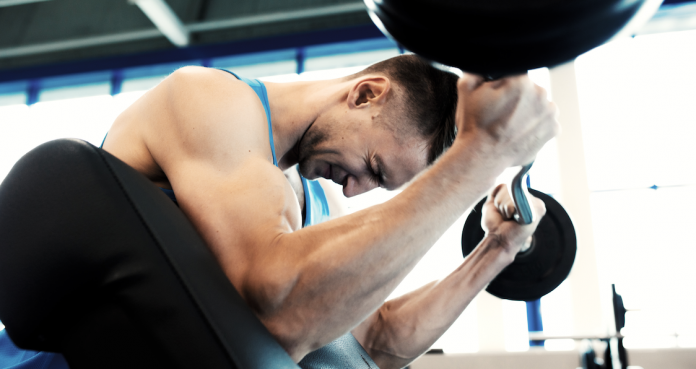
Top 5 Moves For Massive Arms
Arms are one of the cornerstones of any self-respecting bodybuilder’s workout routine.
When you picture someone working out at the gym, probably the first image that comes to mind is someone lifting weights. That’s because getting totally shredded, massive arms is basically the birthright of every bodybuilder. But are you sure that you’re getting the most gains for the energy you’re exerting? Here are the top 5 moves that are essential for making massive gains in your arms.
1. Bicep Curls
Bicep curls are probably the best exercise you can be doing to increase muscle mass in your arms. This is because they force you to keep your back completely straight as you lift, which focuses the muscular tension of your entire body down into your arms as you lift. It’s a simply exercise, but it’s a classic for a reason – it really works.
One tip for great, effective bicep curls is to increase the intensity of your workout by using a “thumb-less grip.” If you keep your thumb on the same side of the barbells as your fingers, you actually increase the workout you get all through the bicep muscle.
2. Dips
Another classic, dips are a great way to work out the arms while also feeling a nice burn in your core and upper back. It requires you to hold your spine in an upright position, so basically all of your body is getting a workout with this one, even if most of the strain is concentrated in your arms.
Dips are exhausting but, when done correctly, are one of the best arm exercises and one of the best full-body exercises overall. An important health and safety tip for dips is to make sure that your back is always straight and you are leaning a little bit forward over your hands to prevent injury.
3. Triceps Pull (Cable Machine)
The cable machine is extremely useful for arm workouts because it allows you to put your muscles to work without the extra wear-and-tear on the knees and shoulders that can come from more mechanical arm exercises. Adjust the cable machine to an amount of resistance that feels right, but still challenging, to you.
Then, do as many tricep pulls as you can – this exercise will focus right it on that area of the bicep and help to develop the musculature there. An important tip to remember for the triceps pull is that you should never lock your knees and always pull straight towards your sternum. Keeping a relaxed stance helps the tricep pull work only on your arms; anything else, and you end up getting more of a core or back workout, instead.
4. Chin-Ups
Another classic, chin-ups are a great way to maximize definition in your arms. Like some of the other exercises on this list, the key to chin-ups is to keep your back straight and really focus on using your arm muscles to lift up your torso, which should feel like a completely rigid object for the duration of the exercise.
Maintaining that control is what develops the arms so completely and fully from this exercise. A great tip for getting the most out of your chin-ups is to move at a slow, highly controlled pace. It’s easy to use your momentum coming down to swing yourself back up and over the bar, but that really doesn’t give you the best workout. Do it slowly for the ultimate burn!
5. Band Pushdowns
Pull down using a low-resistance band attached to something above you — a bar, a doorframe, etc. Just like using the cable machine to do a tricep pull, this exercise maximizes how much muscle mass you gain with minimal exertion in the joint department.
An important tip to remember when doing band pushdowns is to always scale the resistance of your band to your difficulty level. Remember, the goal isn’t to do what you’re comfortable with, but to push just beyond that. If you’re a veteran bodybuilder, you’re going to want a band with extra resistance, otherwise you simply won’t make huge gains.
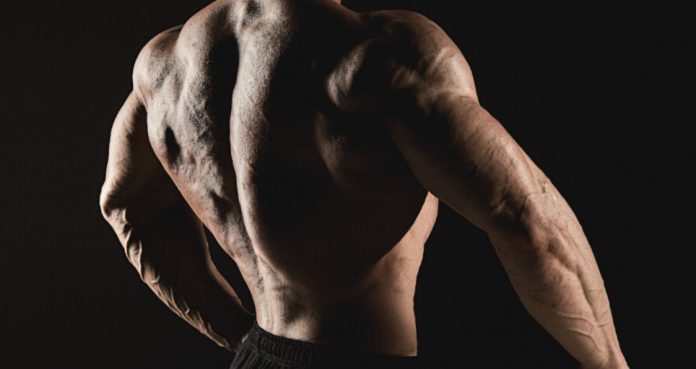
Mastering The Straight Arm Pulldown
The straight arm pulldown is an excellent lat-isolating strength exercise which has been derived from the classic lat pulldown exercise. Unlike the lat pulldown, the straight arm variation involves assuming a standing position rather than seated. Additionally, as the name suggests, the exercise involves maintaining straight arms throughout the entirety of the movement, whereas the lat pulldown involves a large degree of elbow flexion.
Straight Arm Pulldown Analysis
The exercise can be considered an isolation exercise which means that movement occurs across one joint only – in this case, the shoulder joint. The lat pulldown, meanwhile, would be considered a compound exercise as movement is generated across more than one joint – the shoulder and elbow (1).
Isolation exercises are specifically beneficial when looking to develop specific muscles or muscle groups. Performing isolation exercises regularly can also facilitate improvements with bigger, heavier compound exercise and may also assist in ironing out any muscular weaknesses and imbalances that exist.
In the case of the straight arm pulldown, the idea is to isolate the latissimus dorsi – the biggest and most powerful muscle group of the back. While the lat pulldown does work the lats to a significant degree (2), the lats work through a shorter range of motion when compared to the straight arm pulldown. The large range of motion found with the straight arm pulldown increases the demand and stress on the lats which forces it to adapt and grow stronger.
While it is the lats that are predominantly driving the movement of the straight arm pulldown, there are other muscles and muscle groups that work to generate and control movement. The rhomboids and traps (upper back), the rear deltoids (back of the shoulders), triceps (upper arm), pectorals (chest) and core, must all contract in some capacity to assist in the movement.
Straight Arm Pulldown Benefits
In addition to strengthening the lats, there are a number of benefits associated with regularly performing this exercise. Firstly, this exercise is excellent for improving the mind-muscle connection. As the name suggests, the mind-muscle connection simply refers to the level of activation felt when performing exercise. Studies suggest that one can actually increase the level of muscle activation by focussing on the working muscle when exercising (3).
The lats are notoriously difficult to “feel” and many lifters find it challenging to feel the lats contracting and relaxing during conventional lat pulldown-type exercises. With the increased range of the straight arm pulldown and the fact that this is an isolation exercise, it becomes much easier to feel the lats.
As mentioned earlier, isolation exercises can have a substantial impact on improving movement and form with compound exercises. This is certainly the case with the straight arm pulldown and the deadlift.
The pulldown strengthens the lats and places them in a similar position to the deadlift. For many people, the deadlift can be a very tricky exercise to learn and rounding of the spine is a common problem.
Often, this rounding can be overcome by engaging the lats. Because the lats assist in lumbar spine flexion and extension (4), learning to activate them properly can help in maintaining a neutral spine alignment. Therefore, performing the pulldown regularly will strengthen the lats, allow for a greater engagement during the deadlift and facilitate deadlift form.
Straight Arm Pulldown Coaching Points
For the straight arm pulldown, a cable pulley and attachment are required. A rope is recommended as the attachment as it will allow for the greatest range of motion. A bar will suffice, however, the range will be slightly more limited using a bar, as the legs prevent the bar moving further back. The rope, however, allows the user to continue pulling backward until the hands are aligned the hips.
Increasing the range of motion will have a knock-on impact on the amount of the lat activation. As suggested earlier, the greater the range, the greater the activation of the muscle. If possible, consider using two ropes rather than one; this will allow for a wider grip and may enhance activation further.
In order to effectively perform the straight arm pulldown, follow the 6 coaching points below.
1) First, select a high pulley, or if adjustable, move the pulley up until it is approximately at head height. Attach the rope to the pulley and grasp both ends of the rope firmly.
2) Before moving into position, focus on pulling your shoulder blades back and down. Squeeze the muscles in order to hold the shoulder blades in this position throughout.
3) Pull your ribcage down, tuck your tailbone under the body and squeeze all core musculature. From there, focus on pushing your hips backwards so that your upper body tips forward by 30-45 degrees.
4) Still holding that solid position, step away from the pulley to create cable tension. As you move backwards, the arms should extended fully overhead and the feet set at hip-width. At this point, you should already be feeling a stretch in the lats.
5) From this position, maintaining straightness, drive the arms down in an arching motion until the hands are by the hips or even slightly beyond the line of the hips. Focus on squeezing the lats at this point.
6) In a controlled fashion begin to reverse the movement. Once again, maintain straight arms and focus on bracing the core in order to control the movement back to the starting point (5).
Look to complete 10 – 15 reps for 3 sets and ensure to rest for 1-2 minutes between sets.
As emphasized a number of times, it is vitally important to maintain straight arms at all times during this exercise. If flexion is allowed to occur at the elbow, some of the emphasis will move away from the lats and onto the triceps, biceps and rhomboids.
Using the Straight Arm Pulldown
As touched on earlier, the straight arm pulldown can have a knock-on impact on one’s deadlifting ability. Therefore, it may be appropriate to perform the pulldown, or another lat-specific exercise, prior to deadlifting. In addition to this, the stretch that is applied during the pulldown can enhance back and shoulder mobility and therefore, performing the exercise at the start of a workout, may be beneficial.
This pulldown variation may also prove to be useful for those who suffer with lower back issues. This is because the body position protects the lower back and the movements required do not involve any motion around the hips or spine.
If your goal is to build muscle size, consider perform 10-15 reps of the straight arm deadlift toward the end of the workout. For maximizing muscle growth, take short rest periods between sets as this will cause a large degree of muscle damage – a key mechanism for muscle growth.
Straight Arm Pulldown Progressions and Regressions
If the straight arm pulldown is a new exercise, be prepared to work with lighter loads for the first few weeks. This will give the nervous system time to safely learn the movement patterns required. If using the equipment is challenging or the movement feels uncontrolled, consider switching to a resistant band which will simplify the demands of the exercise substantially.
For those who find the arching arm movement a challenge, consider performing the exercise while standing more upright instead of hinging right over. This will reduce the stretch placed on the lats and consequently enhance movement control.
The most obvious way to increase the challenge of the pulldown is to add more load to the pulley. However, as mentioned earlier, it is possible to increase the range of motion by using two ropes or by selecting a longer rope which will effectively increase the intensity of the exercise.
Straight Arm Pulldown Alternatives
There are a couple of alternative exercises that can be performed to replicate the movement and stress of the straight arm pulldown. They are ideal for those who do not have access to a pulley and rope.
Dumbbell / Kettlebell Pullover
To set up for the pullover, grab a single dumbbell or kettlebell and lie back on a flat bench. Dig the heels into the floor and hold the weight in both hands directly above the chest. Keeping the arms straight, gradually lower the arms over the head until the upper arms are next to the head. The lats will be stretched out maximally at this point. From that position, drive the weight back up to the starting point above the chest.
Gironda Pulldown
The gironda pulldown is a combination of both a pulldown and a row. The movement places a great demand on a number of back muscles however, it does not provide the same type of isolation as a straight arm pulldown.
Final Word
The straight arm pulldown is undoubtedly one of the best lat isolating exercises. It can provide a wide range of benefits – from developing lat strength to improving one’s deadlift technique. Regardless of your health and fitness goals this exercise should be considered when designing a workout or training program.
For more news and updates, follow Generation Iron on Facebook, Twitter, and Instagram.
References:
1- Gentil, Paulo; Soares, Saulo; Bottaro, Martim (2015-6). “Single vs. Multi-Joint Resistance Exercises: Effects on Muscle Strength and Hypertrophy”. Asian Journal of Sports Medicine. 6 (2). doi:10.5812/asjsm.24057. ISSN 2008-000X. PMC 4592763. PMID 26446291.
2- Lehman, Gregory J; Buchan, Day Deans; Lundy, Angela; Myers, Nicole; Nalborczyk, Andrea (June 30, 2004). “Variations in muscle activation levels during traditional latissimus dorsi weight training exercises: An experimental study”. Dynamic medicine : DM. 3: 4. doi:10.1186/1476-5918-3-4. ISSN 1476-5918. PMID 15228624.
3- Calatayud, Joaquin; Vinstrup, Jonas; Jakobsen, Markus Due; Sundstrup, Emil; Brandt, Mikkel; Jay, Kenneth; Colado, Juan Carlos; Andersen, Lars Louis (2016-3). “Importance of mind-muscle connection during progressive resistance training”. European Journal of Applied Physiology. 116 (3): 527–533. doi:10.1007/s00421-015-3305-7. ISSN 1439-6327. PMID 26700744.
4- Bhatt, C.R.; Prajapati, B.; Patil, D.S.; Patel, V.D.; Singh, Binodkumar G.P.; Mehta, C.D. (March 7, 2013). “Variation in the insertion of the latissimus dorsi & its clinical importance”. Journal of Orthopaedics. 10 (1): 25–28. doi:10.1016/j.jor.2013.01.002. ISSN 0972-978X. PMC 3768243. PMID 24403744.
5- “Straight Arm Pulldown”. exercise.wsu.edu.
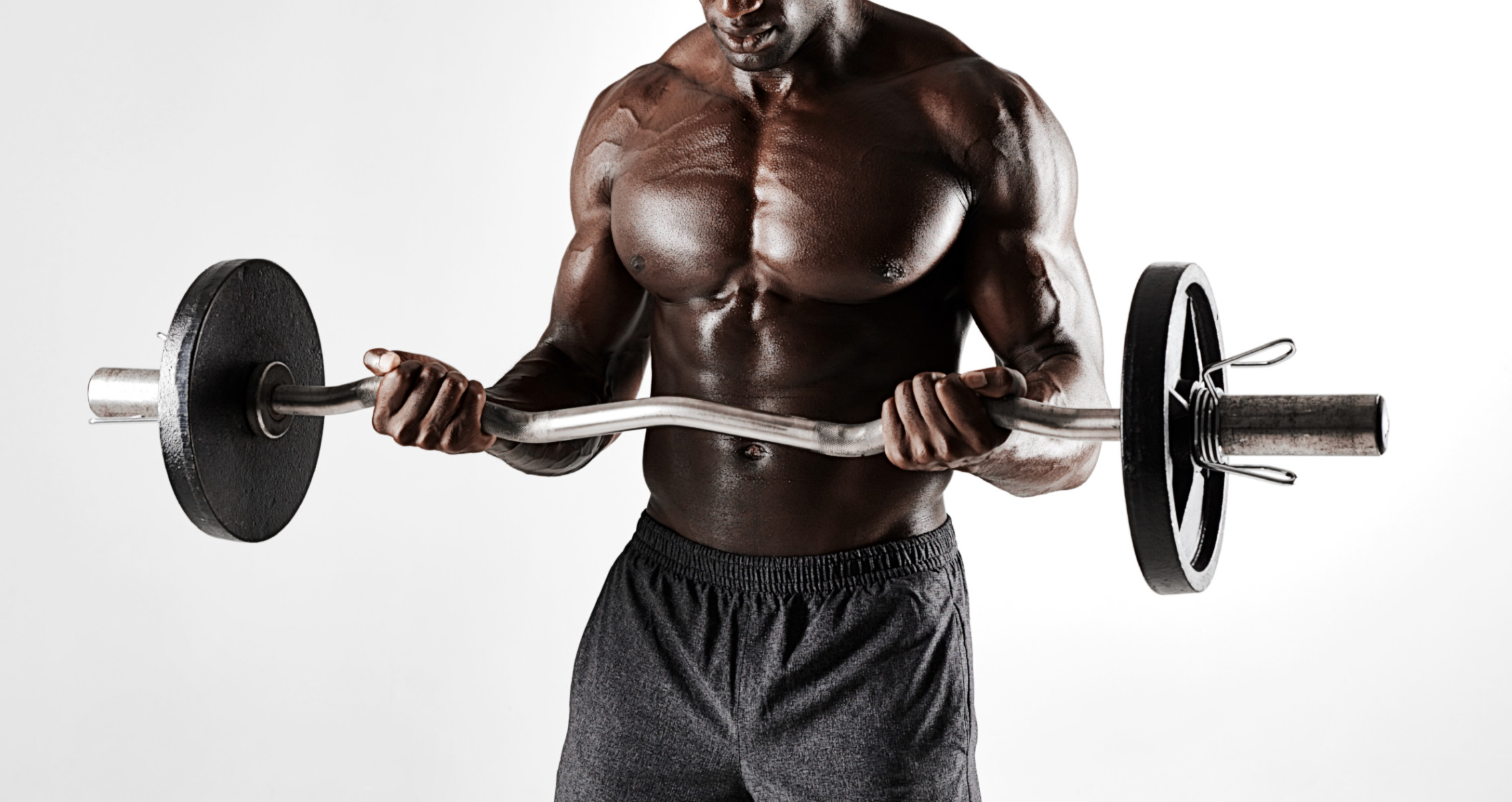
Best Exercises for Bigger Biceps
Best Exercises for Bigger Biceps
Curls are the fundamental biceps-builder, but they can become monotonous and downright boring. Hence why most of the people you see doing curls at the gym don’t have much progress to show for it. They’re doing the same variation with the same weight for the same amount of reps, week after week.
In order to elicit muscle adaptation and build a bigger set of guns, try implementing the following considerations and exercises into your program.
Training Considerations for Building Bigger Biceps
The ceiling of loading potential is low. Curls are a single joint movement involving flexion and extension of the elbow. That said, you can’t handle as much resistance compared to compound lifts. Rather than feeding into the idea that you have to curl heaver weights every week, you can continue to see gains in your biceps using the following strategies.
Use variety. Different rep ranges, grips, tempo, and tools will help stimulate hypertrophy.
Frequency is important. Instead of hitting biceps once a week, try adding another day to your split.
Intensity is important. Get after it. When you feel like you can’t do one more rep, do two. That said, stay true to your form as much as you can.
Intent is important. To really see noticeable gains, dial in on your biceps and move the weight with intent every rep of every set. As C.T Fletcher says, “I command you to grow!”.
Best Exercises for Bigger Biceps
Chin-Ups
I know what you’re thinking and you’re right, chin-ups aren’t really a “biceps exercise”, let alone a curl. And if you’re doing them right, you should feel it more in your lats and forearms anyway. All things considered, you can focus your intent on your biceps instead as you pull yourself up and squeeze the heck out of ‘em during the eccentric (lowering) phase.
Chin-ups are one of the tried and true ways to increase your relative strength (how efficiently you can move your body through space in relation to your weight). And while it can be easy to cheat your way through dumbbell curls by swinging the weight up, it’s much harder to do so during chin-ups.
Note: No, “kipping” chin-ups will do nothing for your biceps. You’ll just look like a tool.
[embedded content]
Barbell Curl
You can’t go wrong here. If you want bigger arms and you haven’t started with these, stop reading right now and go grab a barbell.
[embedded content]
Overcoming Isometric Barbell Curl
It’s universally forbidden to curl in the squat rack, with two exceptions to the rule.
If you’re curling more weight than the other guy is squatting.
If you’re doing 3D curls.
Credit goes to Joe DeFranco for this gem. This is probably my favourite way to do curls and I’m sure it’ll be one of yours as well.
The overcoming isometric curl (aka 3D curl) combines all three types of muscle contractions into one exercise: concentric, eccentric, and isometric. Put lightly, it burns the hell out of your biceps.
To do it, set up a couple spotter arms or safety pins on the squat rack at about sternum-height. Grab a barbell and curl it up against (underneath) the spotter arms so it’s placed firmly against them. Curl the barbell up against the arms as hard as you can for an 8-10 sec contraction (at this point you should really feel your biceps and core fire up). After the initial hold, take a step away from the rack and perform 10-15 barbell curls. You’re welcome.
Barbell Curl with Positional Isometrics
Positional isometrics are when you add segmented pauses throughout an exercise’s entire range of motion. You can read my full article on the subject HERE.
Other than the obvious fact that you’re increasing your biceps’ total time under tension using isometrics, it’s also a really effective way to minimize the most common technique flaw during curls: swinging.
You’ve seen it before. The egotistical maniac flailing his arms in front of the dumbbell rack using weights he has no business lifting. Granted, when you’re really going for it and reaching the end of a tough set, a little body English doesn’t hurt. But when your entire set consists of swinging heavy weights to impress your gym crush (who couldn’t care less, mind you), you’re neglecting the most important part of biceps curls: your biceps.
Positional isometric curls are harder to “cheat”, thus making your biceps the prime mover of the exercise.
[embedded content]
Prone Inclined Dumbbell Curl
Credit goes to John Meadows here. Keep the dumbbells pressed together and squeeze the hell out of your biceps. You get a great peak contraction at the top of the curl. As with the positional isometric variation, the prone position doesn’t allow much wiggle room for cheating, which is always great for isolating the biceps.
[embedded content]
Inclined Hammer Curl
If you have pre-existing shoulder/pec pain, you might want to shy away from this one for now. To do the inclined curl, have your arms extended with your biceps fully stretched. You can use a supinated or neutral grip here, as long as you feel the contraction where it matters: your biceps.
[embedded content]
Kettlebell Rope Curl
Other than just looking cool, the benefits here stretch beyond just building bigger biceps. The inconsistency of the weight challenges your core while the rope handle trains your grip strength. A 3-in-1 curl variation if you ask me.
[embedded content]
Tilted Barbell Curl
A common theme you’ve probably noticed is to eliminate cheating as much as possible in order to obtain maximal muscle contraction. Here, stick your butt against the wall and glute it there. With your torso tilted forward slightly, stretch your biceps with your arms fully extended and perform curls. Stay leaned over throughout your set to reduce assistance from your torso and hips.
[embedded content]
Tip: Flex your triceps at the bottom of each rep as you lockout your arms for elbow stabilization and a greater contraction in the opposing muscles (the biceps).
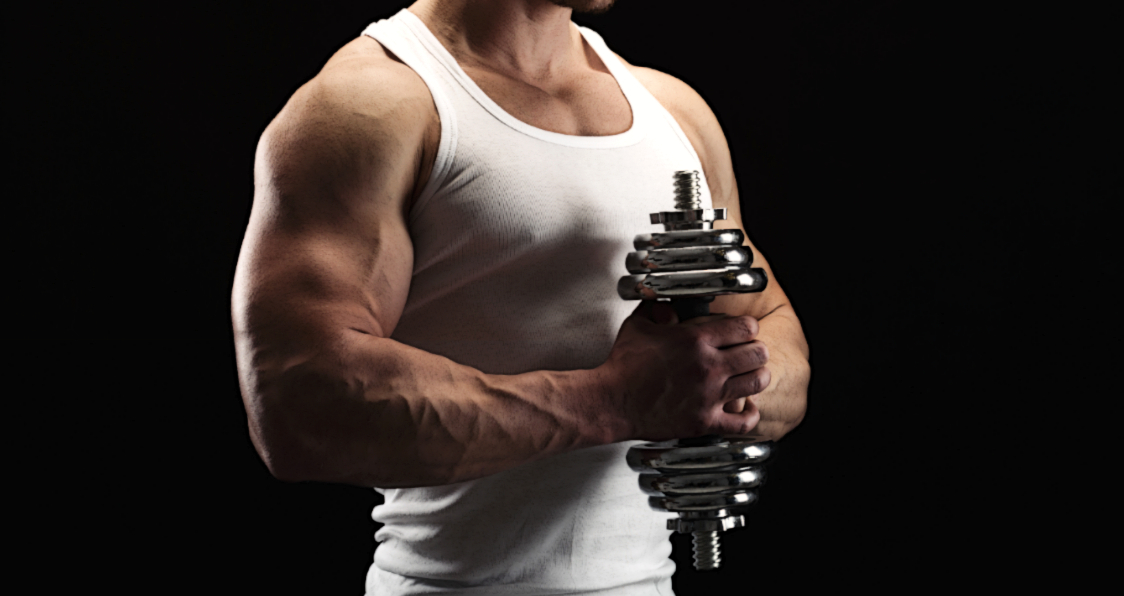
7 Ultimate Training Tips For Developing Forearm Size
Building The Forearms for Fuller Looking Arms
When looking to build significant muscle size, training tends to focus on developing large muscles groups such as the glutes, quads, lats, pecs and delts.
While the arms do often receive a lot of attention too, the focus is predominantly on the muscles of the upper arm – the biceps and triceps.
As a result, the forearms can be neglected and therefore can under-develop in comparison to other areas.
It is important to build size and definition in the forearms in order to develop full-looking arms that matches your overall physique.
The general approach to forearm building is to concentrate on forearm isolation exercises for the forearm flexors and extensors – exercises such as wrist curls.
While these types of exercises can certainly allow for forearm growth, there are a number of other methods that can be employed to accelerate the rate of development.
The 7 Tips For Big Forearms
If you are serious about building size in the forearms, adopt a number of the following 7 tips and look to incorporate them into your training program.
1) Ditch the Straps
Wrist straps can be an excellent training tool which eliminate the detrimental impact of failing grip strength by securing the bar to the hands (1).
With exercise like the deadlift, failing grip strength can cause the individual to cease exercising before they reach absolute muscular failure.
Adding wrist straps will provide a much securing grip on the bar and allow the performer to work through to muscular failure without the grip slackening and failing.
However, when it comes to building size in the forearms, leave the straps in the locker room.
During all pulling exercises, you hold the bar by wrapping the fingers and thumbs tightly around the equipment your using, otherwise it will fall out of your grasp.
The extrinsic muscles of the forearms must work hard to maintain a secure grip throughout the duration of the exercise (2). Over time, these muscles will improve in strength and increase in size.
Furthermore, the heavier the load lifted, the more the forearms flexors must engage. Therefore, when lifting heavy, forget using straps in order to get maximize forearm activation.
There are a number of common pulling exercises that are excellent for forearm development and grip strength – exercises such as the deadlift, barbell row, and chin-ups.
Pushing exercises, such as the bench press and overhead press, are also effective forearm extensor developers – however, pulling exercises are superior for forearm engagement.
2) Grip Hard
Leading on from the last tip, it may be the case that you want to work the forearms but do not want to forgo using wrist straps.
This is absolutely fine. It is still possible to work the forearms effectively while still using the straps.
Here are two methods that are particularly useful for really pumping up the forearms.
Grab a barbell, place it on a power rack and load it up. Grip tightly and look to hold it at arms length for approximately 30 – 60 seconds.
It is also possible to this with dumbbells too. Select two heavy dumbbells, secure your grip and hold, again for 30 – 60 seconds.
Look to repeat this 8-10 times to really get the forearms burning.
3) Utilize Cables
As mentioned earlier, one of the most common forearm exercises is the wrist curl and reverse wrist curl. Barbells and dumbbells are most frequently used with this exercise.
However, the cables may be a better choice when it comes to wrist curls. This is because the cables maintain tension throughout the entirety of the movement.
This places an even greater demand on the wrist flexors and extensors and which may lead to a more efficient development of the forearms.
For the cable wrist curl, attach a short bar to the cable and adjust the pulley to the lowest position. Using D rings for this exercise is also acceptable.
In a kneeling position, place the forearms on the knees and use the thighs like a preacher bench. If preferred, set up a preacher bench in front of the cable machine instead.
Focus on flexing and extending the wrist only and perform the prescribed number of reps. It may be of greater benefit to focus on one wrist at a time rather than both simultaneously.
4) Go Old-School
You don’t need the latest fitness equipment to work the forearms effectively. In fact, there are a number of excellent forearm exercises that use basic kit.
One of the simplest exercises uses a dowel and a length of string. Insert the string through dowel, attach a weight to the string and the look to turn the dowel round and round to bring the weight up.
Once the weight has risen up to the dowel, unravel the string by gradually turning the dowel back and lowering the weight to the floor once again.
The hand gripper is another example of another basic piece of forearm developing kit. You can buy hand grippers with a range of grades.
Some take 60 pounds of pressure to close whereas others can be as high as 360 pounds of pressure! Be aware, this exercise is a lot more challenging than it looks.
5) Increase Wrist Training Frequency
The forearms are made up of dense muscle tissue which can be a little more resistant to change. Therefore, training them more often is crucial to facilitate size improvements.
Furthermore, research indicates that one of the most effective methods of promoting muscular hypertrophy is to increase the frequency of training (3).
Therefore, if looking to accelerate forearm hypertrophy, consider performing forearm orientated exercises more regularly – perhaps as much as every second day.
Be careful not to schedule forearms into your training the day before performing back and biceps. Having sore forearms when performing pulling exercises may negatively impact your performance.
6) Use a High Rep Scheme
Typically, for hypertrophy, a rep range of 6-12 reps will suffice. However, for forearm training, it is recommended to aim a lot higher than that.
Aim to complete high rep sets with a minimum of 15 reps. Feel free to experiment with rep ranges utilizing anything between 15 – 50 reps per set.
Many individuals believe that completing high reps does not positively impact the rate of muscle growth. However, high reps have been found to be beneficial when it comes to hypertrophy (4).
7) Consider Loaded Carries
Finally, it may be worthwhile adding in heavy carry exercises into your training – exercises such as the dumbbell farmers walk.
Not only will these type of exercises place a great demand on your grip strength and forearms, they are also very simple to set-up and execute.
For the dumbbell farmers walk, all that is required is a clear space and a heavy load. Simply pick up the load and take a number of steps forward while keeping the weight tight to the body.
Keeping going until the grip gives in and forces you to stop. Over time, gradually add more load to continuously challenge the forearms and force them to adapt.
Final Word
While wrist isolation exercises are very useful for developing forearm size and strength, there are a number of other strategies that can be adopted to bring about substantial growth.
Consider utilizing a number of the aforementioned forearm tips to your training, train hard, be consistent and over time, the forearms will noticeably grow causing the arms to look comprehensively bigger and fuller.
For more news and updates, follow Generation Iron on Facebook, Twitter, and Instagram.
References:
1-Coswig, Victor S.; Machado Freitas, Diogo Felipe; Gentil, Paulo; Fukuda, David H.; Del Vecchio, Fabrício Boscolo (2015-12). “Kinematics and Kinetics of Multiple Sets Using Lifting Straps During Deadlift Training”. Journal of Strength and Conditioning Research. 29 (12): 3399–3404. doi:10.1519/JSC.0000000000000986. ISSN 1533-4287. PMID 26595133
2-Mitchell, Brittney; Whited, Lacey (2019), “Anatomy, Shoulder and Upper Limb, Forearm Muscles”, StatPearls, StatPearls Publishing, PMID 30725660
3-Ochi, Eisuke; Maruo, Masataka; Tsuchiya, Yosuke; Ishii, Naokata; Miura, Koji; Sasaki, Kazushige (July 2, 2018). “Higher Training Frequency Is Important for Gaining Muscular Strength Under Volume-Matched Training”. Frontiers in Physiology. 9. doi:10.3389/fphys.2018.00744. ISSN 1664-042X. PMC 6036131. PMID 30013480.
4-pubmeddev. “Effects of Low- vs. High-Load Resistance Training on Muscle Strength and Hypertrophy in Well-Trained Men. – PubMed – NCBI”. www.ncbi.nlm.nih.gov.
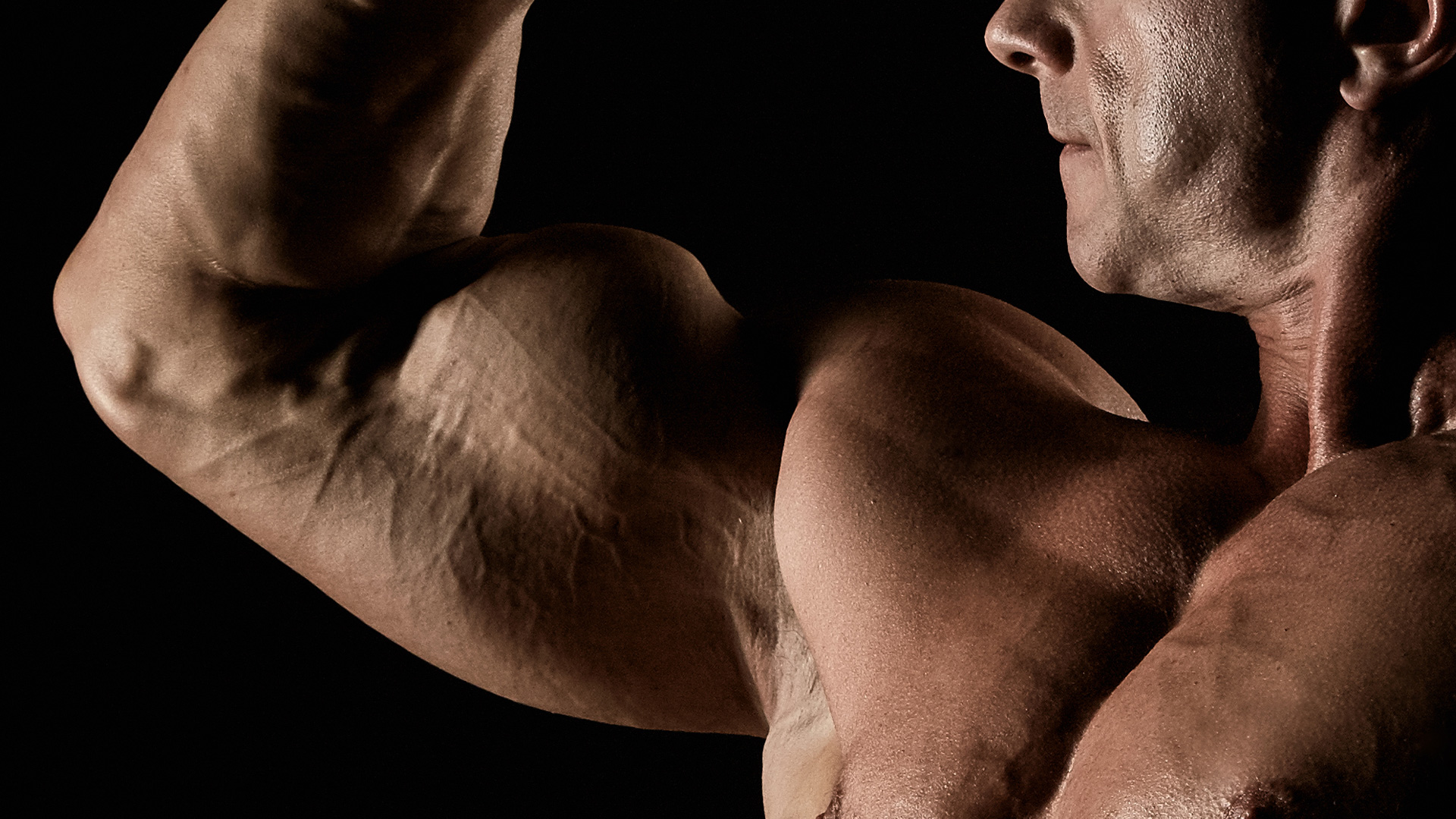
4 Bicep Curl Variations For A Serious Pump
Blast your biceps with these awesome curl variations.
Ask most guys who are serious about their fitness goals. When they think about being in great shape – more than likely the image they have in their heads is of a ripped and striated upper body. It’s what gives a bodybuilder that superhero appearance that so many bodybuilders covet. The building up of the chest, back, and abs are all integral to the process of having a well formed upper body. But the whole picture wouldn’t be complete with some well defined arms.
No matter what stage of the game you’re in there’s no way that an avid bodybuilder wouldn’t want some mountainous biceps to bring together their over all look. If you’re looking to make some major headway in building up your arms then check out these awesome variations for your biceps.
Incline Dumbbell Curl
This exercise is a great variation on your usual bicep curl. By using a seated bench and inclining the seat to just above the 45 degree angle you’ll ensure that you’ll give your arm full range of motion. While performing these be sure to twist your wrist as you get to the top of the curl and within a few reps you’ll be guaranteed to get a great pump. But remember, this exercise is all about form and if your technique sucks then you can forget about reaping the benefits of this great exercise.
21s
This variation is a high rep alternative that is sure to get your biceps burning. The exercise requires a manageable amount of weight in order to complete the 21 reps in one set. Too heavy and you won’t make it through the exercise. Too light and you won’t even feel anything. The first variation starts with your arms fully extended with a barbell or EZ bar in your grips. Curl the bar right up to your stomach then lower it slowly for 7 reps. Then bring the bar up to chest level and curl up to your chin for 7. Lastly, start from the bottom and curl up to your chin for full range of motions for the remaining 7 reps.
Spider Curl
For this variation you’ll need to have a preacher bench to perform the action. Where you would normally be in a seated position at the preacher bench, this exercise requires you to be standing when performing the motion. With the preacher pads right under your arm pits, grab a EZ bar, adjust to a narrow grip and perform the curl. This exercise is great for building up the short head muscles of the biceps and can add some great definition.
Standing Cable Curl
This exercise is a great finisher for your workout. The cable curl can be performed like the standard barbell or dumbbell curl, but it does allow for some variations that can be great for stimulating both the long and short head muscles of the biceps. You can move the shoulders forward to attack the short head muscles or lean backwards to work the long head muscles. You can choose to do a standard 10-12 reps with the movement or work to failure to really thrash the muscles.
What do you think about these bicep variations? Let us know in the comments below and be sure to follow Generation Iron Facebook and Twitter.
